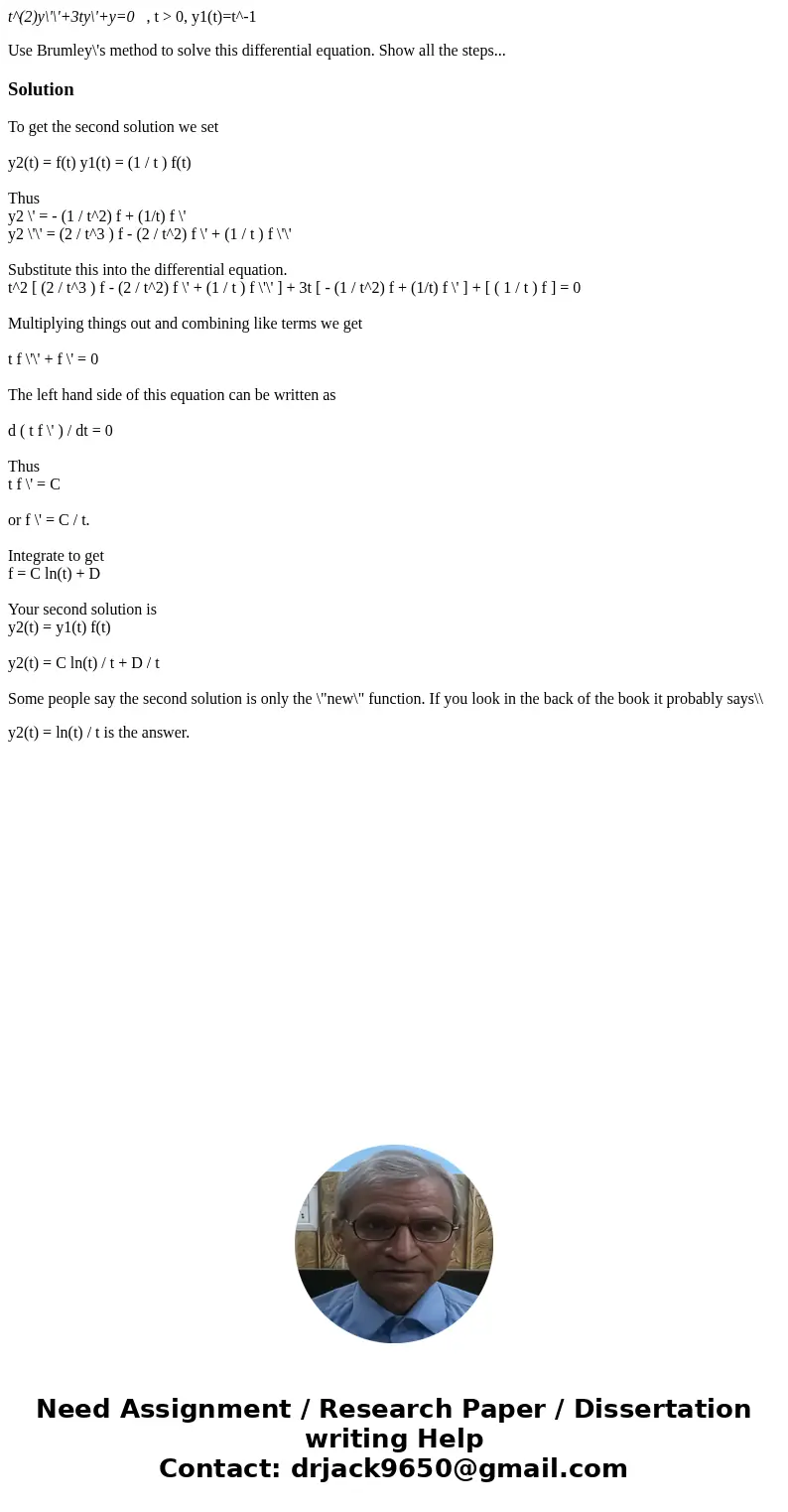t2y3tyy0 t 0 y1tt1 Use Brumleys method to solve this diffe
t^(2)y\'\'+3ty\'+y=0 , t > 0, y1(t)=t^-1
Use Brumley\'s method to solve this differential equation. Show all the steps...
Solution
To get the second solution we set
y2(t) = f(t) y1(t) = (1 / t ) f(t)
Thus
y2 \' = - (1 / t^2) f + (1/t) f \'
y2 \'\' = (2 / t^3 ) f - (2 / t^2) f \' + (1 / t ) f \'\'
Substitute this into the differential equation.
t^2 [ (2 / t^3 ) f - (2 / t^2) f \' + (1 / t ) f \'\' ] + 3t [ - (1 / t^2) f + (1/t) f \' ] + [ ( 1 / t ) f ] = 0
Multiplying things out and combining like terms we get
t f \'\' + f \' = 0
The left hand side of this equation can be written as
d ( t f \' ) / dt = 0
Thus
t f \' = C
or f \' = C / t.
Integrate to get
f = C ln(t) + D
Your second solution is
y2(t) = y1(t) f(t)
y2(t) = C ln(t) / t + D / t
Some people say the second solution is only the \"new\" function. If you look in the back of the book it probably says\\
y2(t) = ln(t) / t is the answer.

 Homework Sourse
Homework Sourse